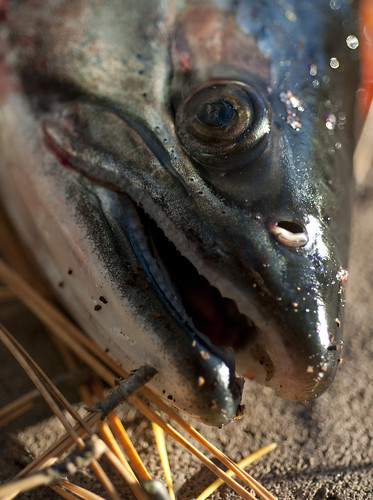What some may not know is that this same journey takes place elsewhere – in my backyard, for example, along the Chocolay River. In the autumn, the coho salmon (Oncorhynchus kisutch) begin to leave Lake Superior, swimming upstream to spawn. Other species in the salmon family join, as well: rainbow trout (Oncorhynchus mykiss; more commonly known as steelheads here) and chinook salmon (Oncorhynchus tshawytscha), both of which, along with coho salmon, were stocked in the Great Lakes some years ago.
As they make their spawning run, the behavior and physical appearance of salmon undergo some dramatic changes. They stop feeding; the snout of the male salmon becomes large and hooked, and the body of the female salmon swells with roe. By the time they spawn, as Bernd Heinrich notes in his book Life Everlasting, the flesh of the living fish has already begun to deteriorate. They die soon after, and their corpses help to feed the ecosystem in which their offspring will soon hatch.
The bodies of these large fish are eaten by many animals, including raccoons (which likely dragged this deceased salmon from the Carp River)...
... and by people. I caught my first-ever coho salmon today, from the Chocolay River. After filleting it, I left the rest in the backyard. The neighborhood foxes and raccoons will finish what I didn't take.






I never realized before that steelhead and rainbow trout were common names for the same species. Great post!
ReplyDelete